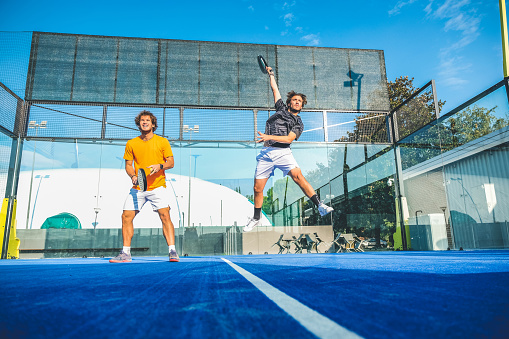General Rules of Rings (Gymnastics)
When performing on the rings, it is important to maintain control and grace throughout your routine. Imagine executing a flawless Iron Cross only to falter due to a technicality in your grip. Understanding the general rules of rings in gymnastics is essential to your success in this discipline. From the equipment specifications to scoring systems and proper techniques, each aspect plays an essential role in your performance. Let's explore the intricate details that can make or break your routine on the rings.
Rings Equipment Specifications
When setting up the rings equipment, make sure that the measurements meet the specified dimensions for competition. Proper ring adjustment is vital for gymnasts' safety and performance. The rings should be suspended at a height of 2.8 meters from the floor, with inner edges placed 50 cm apart and parallel to each other.
Equipment maintenance is key to ensuring the longevity and safety of the rings. Regularly inspect the straps, buckles, and attachments for any signs of wear and tear. Replace any damaged components immediately to prevent accidents during routines. Additionally, check the integrity of the ceiling or support structure from which the rings are hung to avoid any mishaps.
When adjusting the rings, make sure they are at the correct height and distance from each other. Proper ring grip is essential for executing maneuvers effectively. Gymnasts should grip the rings firmly with their palms facing each other and thumbs wrapped around the rings. This grip provides stability and control during swings, holds, and dismounts.
Maintaining the rings equipment and following proper adjustment procedures not only enhances performance but also prioritizes the safety of gymnasts. By adhering to these guidelines, you create an environment conducive to skill development and successful routines. Remember, safety first in all aspects of ring gymnastics.
Scoring System Overview
When it comes to the scoring system in rings, understanding the breakdown of the criteria is essential. You will need to differentiate between execution and difficulty to grasp how points are awarded. This distinction plays a significant role in determining an athlete's final score.
Scoring Criteria Breakdown
The breakdown of scoring criteria in ring sports provides a detailed overview of the scoring system used to determine winners in various competitions. Understanding the scoring breakdown and judging criteria is essential for gymnasts and spectators alike. Judging criteria typically focus on execution, difficulty, and artistry. Execution refers to how well the routine is performed, considering factors like body position, control, and fluidity of movements. Difficulty assesses the complexity and risk of the skills performed, rewarding athletes for incorporating challenging elements. Artistry encompasses the overall presentation, including expression, creativity, and style. By carefully analyzing each of these aspects, judges can assign scores that reflect the gymnast's performance accurately. This thorough evaluation guarantees fairness and precision in determining the winners of ring gymnastics competitions.
Execution Vs. Difficulty
In ring sports, the distinction between execution and difficulty plays a significant role in determining the scoring outcome. When it comes to scoring in gymnastics, the judges evaluate the routine based on execution precision and difficulty progression. Execution precision refers to how well the athlete performs each element of their routine, focusing on form, technique, and control. On the other hand, difficulty progression measures the complexity and intricacy of the skills incorporated into the routine. Balancing these two aspects is vital for gymnasts aiming for high scores. Below is a table summarizing the key factors judges consider when scoring routines:
| Factors | Execution Precision | Difficulty Progression |
|---|---|---|
| Description | Focuses on form, technique, and control | Evaluates the complexity and intricacy of skills |
| Importance | Ensures clean and precise movements | Rewards athletes for pushing the boundaries with challenging elements |
| Goal | Achieve flawless execution | Include advanced skills to enhance the routine |
Competition Routine Requirements
To fulfill competition routine requirements, participants must demonstrate precise execution of specified movements. In gymnastics rings competitions, routine creativity and artistic expression play essential roles in captivating the judges and audience. Athletes are expected to showcase a blend of strength, flexibility, and gracefulness in their routines, incorporating unique elements that highlight their individual style. The ability to infuse personal artistry into each movement sets exceptional gymnasts apart, making their performances memorable and compelling.
Furthermore, physical endurance and mental focus are paramount in meeting the demands of a competition routine. Athletes must maintain peak physical condition to execute challenging maneuvers with precision throughout the entire routine. Endurance is key to sustaining strength-based elements and seamless conversions between different skills. Meanwhile, unwavering mental focus is essential for staying composed under pressure, ensuring flawless performance under the scrutiny of judges and spectators.
Proper Ring Grip Techniques
Demonstrate proper ring grip techniques by ensuring a firm and secure hold on the rings throughout your routine. Grip strength is essential for maintaining control and stability during your performance on the rings. To achieve best grip strength, focus on developing both your hand and forearm muscles through targeted exercises. Strengthening these muscles will not only improve your grip on the rings but also enhance your overall performance.
Hand positioning plays a critical role in maintaining a solid grip on the rings. Make sure that your hands are positioned evenly on the rings, with your palms facing inward towards each other. This position helps distribute the weight evenly and reduces the strain on your wrists. Keep your fingers spread wide apart to maximize contact with the rings and create a more stable grip.
Practice gripping the rings with different hand positions to determine which grip works best for you. Experiment with variations such as false grip and hook grip to find the most comfortable and secure option. Remember to adjust your grip strength and hand positioning based on the specific requirements of each routine to ensure best performance.
Ring Stability and Swinging Control
When aiming to enhance your performance on the rings, mastering stability techniques and refining your swinging form are important aspects to focus on. By honing your stability techniques, you can establish a solid foundation for executing complex maneuvers with precision and control. Additionally, perfecting your swinging form will allow you to maintain momentum and fluidity throughout your routine, elevating the overall quality of your performance.
Stability Techniques
Implementing proper stability techniques, such as ring stability and swinging control, is important in ensuring the safe and effective operation of rings in various applications. Body alignment plays a vital role in maintaining stability on the rings. Proper alignment helps distribute your weight evenly, reducing the risk of imbalance. Engaging the right muscles, like the core, shoulders, and arms, is essential for stability. These muscles work together to support your body and control movement on the rings. By focusing on muscle engagement and maintaining correct body alignment, you can enhance your stability on the rings, allowing you to perform your routine with control and confidence. Practice these techniques consistently to improve your overall performance and prevent injuries.
Swinging Form
To optimize your swinging form on the rings and guarantee ring stability and control, mastering the coordination of your body movements is paramount. Proper body alignment and smooth changes are key elements to focus on for improving your swinging form. Here are three essential tips to enhance your swinging technique:
- Maintain Proper Body Alignment: Make sure that your body is aligned correctly throughout the swing to maximize control and power.
- Focus on Smooth Changes: Work on seamlessly changing between different swinging movements to maintain momentum and rhythm.
- Engage Core Muscles: Keep your core muscles engaged at all times to stabilize your body and control the swing more effectively.
Safety Guidelines for Ring Training
Prioritize safety by adhering to established guidelines during ring training sessions. Safety is paramount in any physical activity, especially when working with gymnastics rings. To guarantee a safe and effective workout, it is essential to follow specific safety guidelines. Here are some essential safety tips to keep in mind during ring training:
| Safety Guidelines | Description |
|---|---|
| Proper Warm-up | Always begin your ring training sessions with a thorough warm-up to prepare your muscles and joints for the exercises. |
| Correct Ring Height | Adjust the height of the rings to a level that allows you to perform exercises comfortably without risking injury. |
| Spotter Assistance | When attempting advanced moves or exercises on the rings, having a spotter present can help prevent accidents and provide support if needed. |
Following these safety guidelines will help reduce the risk of injuries and guarantee a productive training session. Remember that safety should always come first, even when aiming for progress and improvement in your ring training. By staying attentive to these guidelines, you can enjoy the benefits of ring exercises while minimizing the chances of accidents or setbacks.
Common Mistakes to Avoid
Begin your ring training sessions by being mindful of common mistakes to avoid, ensuring a more effective and safe workout experience. To maximize your performance and prevent injuries, pay attention to the following:
- Important Body Alignment and Breathing: One of the most common mistakes in ring training is failing to maintain proper body alignment throughout exercises. Misalignments can lead to strain on your muscles and joints, reducing the effectiveness of your workout and increasing the risk of injury. Focus on keeping your body in a straight line, engaging your core muscles, and breathing deeply and consistently to support your movements. Remember, proper alignment and breathing are important for executing movements smoothly and efficiently.
- Vital Focus and Visualization Techniques: Lack of mental focus can hinder your progress in ring training. Many athletes overlook the importance of mental preparation and visualization techniques. Before starting your routine, take a moment to visualize yourself performing each exercise with precision and control. Concentrate on the mind-muscle connection to enhance your performance and reduce the likelihood of mistakes. By cultivating mental focus and incorporating visualization techniques into your training, you can elevate your skills and achieve better results on the rings.
Frequently Asked Questions
Can Gymnasts Wear Gloves or Grips While Performing on the Rings?
You can wear gloves or grips while performing on the rings. Gloves provide advantages like better grip and protection, but they may limit your tactile feel. Grips can enhance safety and performance by reducing friction and preventing blisters.
Are There Height or Weight Restrictions for Gymnasts Competing on the Rings?
You don't have to worry about height or weight restrictions when competing on the rings. Just focus on meeting age limits and skill level requirements. As long as you meet those criteria, you're good to go!
How Often Should Gymnasts Train on the Rings to Improve Their Skills?
To enhance your skills on the rings, focus on training frequency. Consistent practice fosters progress. Refine technique and form regularly to see improvements. Dedication to frequent sessions guarantees steady advancement and mastery of gymnastic maneuvers.
Are There Specific Exercises or Drills That Can Help Improve Ring Strength and Stability?
To enhance ring strength and stability, incorporate fundamental exercises like pull-ups, dips, and holds. Focus on technique tips for proper form. Progression strategies, such as gradually increasing difficulty, are key to advancing skills effectively.
What Is the Typical Lifespan of a Set of Gymnastics Rings Before They Need to Be Replaced?
When it comes to ring maintenance and longevity, the typical lifespan of gymnastics rings varies based on usage. Regular inspection and proper care can extend their lifespan. Budgeting for replacement frequency should consider the quality of the rings.






